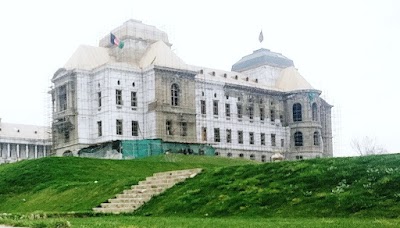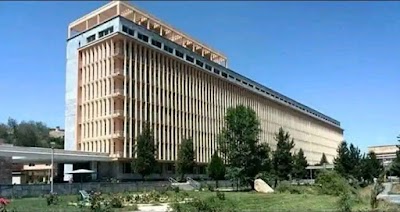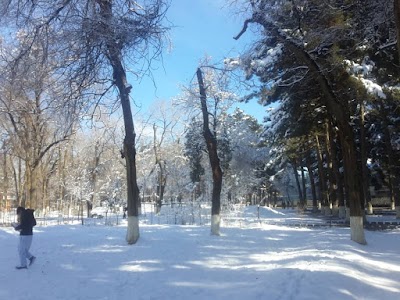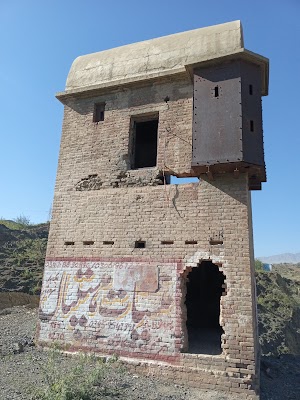Darul Aman Palace (قصر دارالامان)
Overview
Darul Aman Palace is one of the most iconic landmarks in Kabul, Afghanistan, a majestic testament to the country's storied history and aspirations for progress. Nestled approximately 16 kilometers south-west of the city center, this imposing neoclassical structure has long been a symbol of modernization and resilience in Afghanistan. Designed by German architect Walter Harten, the palace was originally built in the early 1920s under the reign of King Amanullah Khan, who envisioned it as a centerpiece for a new, modern Afghanistan.
King Amanullah Khan's Vision
A progressive ruler, King Amanullah Khan sought to transform Afghanistan into a modern state and saw Darul Aman Palace as a cornerstone of this grand vision. He intended the palace to be part of a larger complex that would include administrative offices and other government buildings. Its name, Darul Aman, translates to "Abode of Peace," reflecting the King's aspirations for a peaceful and progressive era. Although construction began in 1923, the palace was never completed during his reign due to political instability and financial constraints. Despite this, the structure has always held a significant place in Afghan history.
Architectural Marvel
One of the most fascinating aspects of Darul Aman Palace is its architectural style, which is unlike any other building in Kabul. The three-story palace features a symmetrical design with grand facades, tall columns, and large windows that provide a panoramic view of the surrounding landscape. The aesthetic is a blend of European Neoclassical and Islamic architectural elements, making it an architectural marvel. The elevated position of the palace allows visitors to look out over the city of Kabul, offering a sense of peace and grandeur.
A Witness to History
Over the decades, Darul Aman Palace has witnessed numerous historical events and periods of tumult. In the 1980s, during the Soviet invasion of Afghanistan, the palace was heavily damaged and left in ruins. It remained in a state of disrepair throughout the 1990s during the civil war and the subsequent Taliban regime. Despite its dilapidated state, the palace stood as a silent witness to the country's turbulent history, a poignant reminder of both dreams unfulfilled and the enduring spirit of the Afghan people.
Restoration and Hope
In recent years, efforts have been made to restore Darul Aman Palace to its former glory. The restoration work, which began in earnest in 2016 and was completed in 2019, aimed to preserve the architectural heritage of the palace while rekindling a sense of national pride. Today, Darul Aman Palace serves as a symbol of hope and resilience, a testament to Afghanistan's enduring spirit in the face of adversity. The restored palace is now open to the public and has hosted several important national events, including the centenary celebrations of Afghanistan's independence in 2019.
A Unique Visitor Experience
For foreign tourists, a visit to Darul Aman Palace offers unique insight into Afghanistan's rich history and culture. The palace complex includes well-manicured gardens and open spaces where visitors can relax and take in the serene surroundings. Guided tours are available, providing historical context and fascinating stories about the palace’s past and the vision of King Amanullah Khan. The interior, though largely renovated, retains many of its original design elements, giving visitors a glimpse into the grandeur of a bygone era.
Cultural Exhibitions and Events
Various exhibitions are hosted within the palace that showcase Afghan art, culture, and history. These exhibitions provide an opportunity to learn about the country's heritage, from ancient times to the present day. Additionally, the palace grounds often serve as a venue for cultural events, including musical performances, art exhibitions, and traditional Afghan festivals, creating a vibrant atmosphere that celebrates the nation's rich traditions.
In Conclusion
Darul Aman Palace is not just a historic building; it is a symbol of Afghanistan's enduring spirit and aspirations for a peaceful and progressive future. Its compelling history, unique architectural style, and recent restoration make it a must-visit destination for anyone interested in learning about Afghanistan's past and its hopes for the future. Whether you are an avid history buff, an architecture enthusiast, or simply a curious traveler, Darul Aman Palace offers a profound and uplifting experience that is sure to leave a lasting impression.






